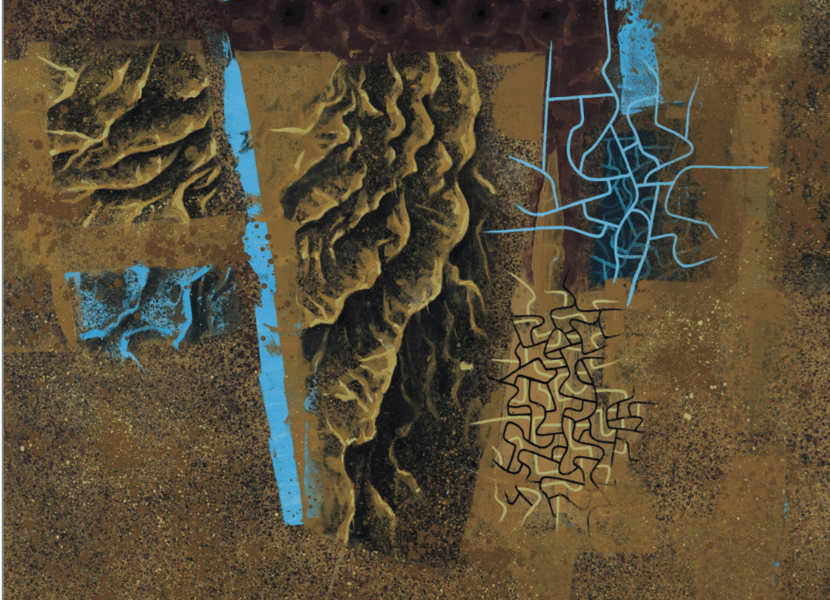Once again, Ricardo Wiesse presents at the ICPNA
Once again the Instituto Peruano Norteamericano (ICPNA) houses the works of the Peruvian painter Ricardo Wiesse, this time at the Germán Krüger Espantoso room, in Miraflores. In this opportunity Wiesse presents his last decade artworks: medium and large format abstract canvas, painted stones, figurative landscapes of the Limean coast, oil paintings and paper drawings. Década Reciente (Recent Decade) opens on Thursday 14th and will be until July 22nd.

Ricardo Wiesse exhibition is made up of paintings of different formats from Azules de Vallejo (Blue of Vallejo) series -exhibited for the first time in Lima-, a group of collages and a set of canvases in a realistic key that portray the landscapes of the Lima coastline (the Ica desert and Pachacámac sanctuary). From perspective, the empty quadrangle of the canvas houses chromatic and spatial investigations that continue a visual dialogue between the Andean past and present, and between the elements of the history of local and universal art.
The paintings fuse and reconfigure legacies and influences of different ages and latitudes. Under the sign of mestizaje, the Peruvian artist communicates through lines, shapes and colors. According to Wiesse, these works have emerged from an "intellectual and affective nebula" that try to facilitate the game between subjectivities through a "sensory approach and an irreducible reflection open to the irreducible mystery".
In addition, Décadas Recientes, seeks to reflect the changes, themes and formal and chromatic displays of a pictorial process identified with the Peruvian history and territory. "For me, the painting is a mirror. It houses experiences that accumulate in each brushstroke and articulates expressive elements born of the consciousness of inhabiting, feeling and thinking about this soil and this society, inevitably framed in the planetary drama", says Wiesse. The images of the exhibition interrogate the viewer and invites him to question the common places and the "explanatory obsession" that deteriorates the imagination.




